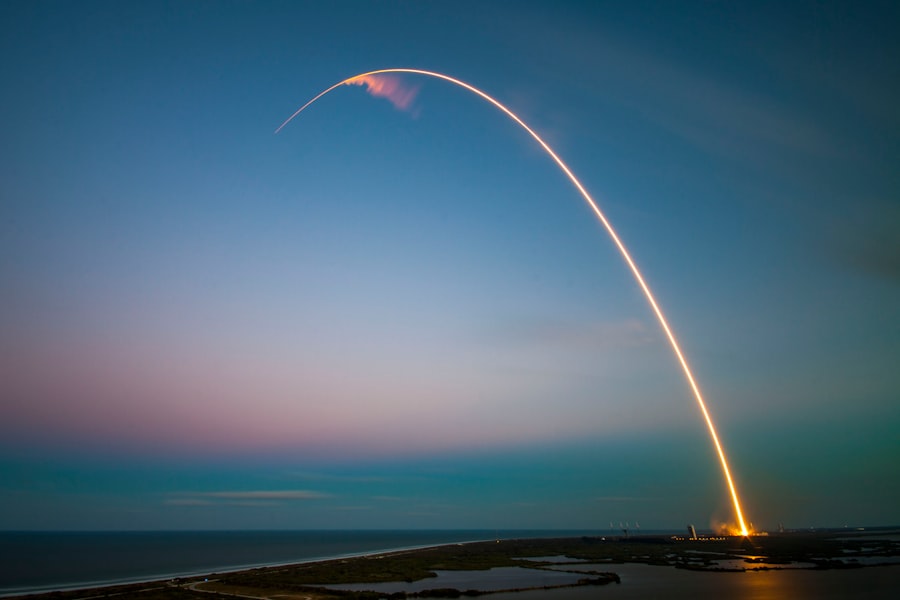The history of NASA’s space station program is a tale of ambition, innovation, and international cooperation. It began in the early 1970s with the Skylab project, which marked the United States’ first foray into long-duration human spaceflight. Skylab was launched in 1973 and served as a laboratory for scientific research, allowing astronauts to conduct experiments in microgravity.
Although it was only operational for a short period, Skylab laid the groundwork for future space station endeavors by demonstrating the feasibility of human life in space for extended periods. Following Skylab, NASA’s vision for a more permanent space station took shape in the 1980s with the Freedom program. This ambitious initiative aimed to create a modular space station that could be expanded over time.
However, political and budgetary challenges led to its eventual cancellation. In the 1990s, the vision evolved into what would become the International Space Station (ISS), a collaborative effort involving multiple countries and space agencies. The first module of the ISS was launched in 1998, marking the beginning of a new era in human space exploration and international cooperation.
The International Collaboration Behind the Space Station
Advancing Scientific Knowledge
The collaborative nature of the ISS has not only fostered scientific advancements but has also strengthened diplomatic ties between nations. The construction and operation of the ISS require extensive coordination and communication among the partner agencies. Each agency contributes unique modules, technology, and expertise, creating a complex yet harmonious environment where international teams work side by side.
Strengthening Diplomatic Ties
This collaboration has set a precedent for future space endeavors, demonstrating that when nations come together, they can achieve extraordinary feats that would be impossible alone. The ISS has become a symbol of international cooperation, showcasing the power of collective effort in pushing the boundaries of human knowledge and exploration.
A Model for Future Space Exploration
The success of the ISS serves as a model for future space endeavors, inspiring new generations of scientists, engineers, and astronauts to work together towards a common goal. As the world looks to the stars, the International Space Station stands as a shining example of what can be achieved when nations put aside their differences and work towards a shared vision.
The Scientific Research Conducted on the Space Station

The International Space Station serves as a unique laboratory for scientific research across various disciplines, including biology, physics, astronomy, and materials science. The microgravity environment allows researchers to conduct experiments that would be impossible on Earth, leading to groundbreaking discoveries. For instance, studies on protein crystallization have provided insights into diseases such as cancer and Alzheimer’s, while experiments on fluid dynamics have enhanced understanding of fundamental physical principles.
In addition to fundamental research, the ISS plays a crucial role in applied science. Experiments conducted aboard the station have led to advancements in technology and medicine that benefit life on Earth. For example, research on plant growth in microgravity has implications for future long-duration space missions and sustainable agriculture on our planet.
The ISS also serves as a testing ground for technologies needed for future exploration missions to Mars and beyond, ensuring that humanity is prepared for the challenges of deep space travel.
The Daily Life of Astronauts on the Space Station
| Activity | Duration |
|---|---|
| Eating | 1-2 hours |
| Exercise | 2 hours |
| Working on experiments | 6-7 hours |
| Personal time | 1-2 hours |
| Sleeping | 8 hours |
Life aboard the International Space Station is a unique experience that combines rigorous work schedules with the challenges of living in microgravity. Astronauts typically follow a structured daily routine that includes conducting experiments, performing maintenance tasks, and participating in educational outreach activities. Their workdays are often filled with scientific research, requiring focus and precision as they navigate the complexities of their environment.
In addition to their professional responsibilities, astronauts must also adapt to the peculiarities of life in space. Simple tasks such as eating, sleeping, and personal hygiene take on new dimensions in microgravity. Meals are carefully planned and packaged to prevent crumbs from floating away, while astronauts use special sleeping bags to secure themselves during rest periods.
Despite these challenges, astronauts often find joy in their unique surroundings, taking time to gaze at Earth from the station’s windows or share experiences with their families through video calls.
The Future of NASA’s Space Station
As NASA looks to the future of its space station program, plans are underway to transition from the International Space Station to new platforms that will continue to support scientific research and exploration. The ISS is expected to remain operational until at least 2028, but discussions are already taking place regarding its eventual decommissioning and replacement. NASA envisions a new era of commercial partnerships that will allow private companies to develop their own space stations, fostering innovation and expanding access to low Earth orbit.
In addition to commercial ventures, NASA is also exploring the potential for new research platforms that could support long-term human presence on the Moon and Mars. The Artemis program aims to return humans to the lunar surface by the mid-2020s, with plans for establishing a sustainable presence on the Moon as a stepping stone for future missions to Mars. These ambitious goals underscore NASA’s commitment to pushing the boundaries of human exploration while continuing to leverage the lessons learned from decades of experience with the ISS.
The Challenges of Living and Working in Space

The Physical Effects of Microgravity
One of the most significant challenges astronauts face is the physical impact of microgravity on their bodies. Prolonged exposure to weightlessness can lead to muscle atrophy, bone density loss, and changes in vision.
Exercise and Physical Activity in Space
To combat these effects, astronauts engage in daily exercise routines using specialized equipment designed for use in microgravity. This helps to mitigate the physical effects of microgravity and maintain their overall health and well-being.
Psychological Challenges and Support Systems
Psychological challenges also play a crucial role in an astronaut’s experience aboard the ISS. The isolation and confinement of living in a small space with limited social interaction can lead to feelings of loneliness or stress. To address these issues, astronauts receive extensive training in teamwork and communication skills before their missions. Additionally, support systems are in place to help them cope with the emotional aspects of their journey, including regular contact with mental health professionals and opportunities for leisure activities.
The Technology and Innovation of the Space Station
The International Space Station is not only a hub for scientific research but also a showcase for cutting-edge technology and innovation. Over the years, it has served as a testing ground for various advancements that have applications both in space and on Earth. From life support systems that recycle air and water to advanced robotics used for maintenance tasks, the ISS has pushed the boundaries of what is possible in extreme environments.
One notable technological achievement is the development of 3D printing capabilities aboard the ISS.
Additionally, advancements in communication technology have enabled real-time data transmission between the ISS and mission control centers around the world, facilitating collaboration among international teams.
The Impact of NASA’s Space Station on Earth
The impact of NASA’s space station program extends far beyond its immediate scientific contributions; it has also influenced various aspects of life on Earth. The research conducted aboard the ISS has led to advancements in medicine, environmental monitoring, and technology that benefit society as a whole. For instance, studies on fluid dynamics have improved our understanding of natural disasters such as hurricanes and floods, leading to better predictive models that save lives.
Moreover, the ISS has inspired generations of scientists, engineers, and explorers by showcasing what can be achieved through international collaboration and innovation. Educational outreach programs associated with the ISS have engaged students worldwide, sparking interest in STEM (science, technology, engineering, and mathematics) fields. As humanity continues to explore space, the legacy of NASA’s space station will undoubtedly shape future generations’ understanding of our place in the universe and our responsibility to protect our home planet.
If you’re interested in extreme weather phenomena like tornadoes, you may want to check out this article on storm chasing equipment, safety tips, and more at tornadoextreme.com. While NASA’s space station focuses on exploring the cosmos, storm chasers brave the elements here on Earth to study and track tornadoes. Understanding the science behind tornadoes, such as the Fujita scale mentioned in another article at tornadoextreme.com, can help us better prepare for and respond to these powerful natural disasters. And if you’re wondering when tornado season typically hits Oklahoma, you can find that information in yet another article at tornadoextreme.com.

